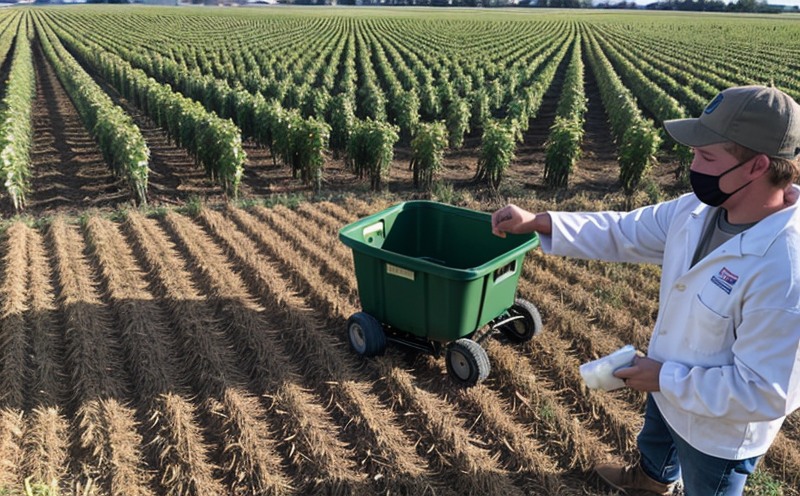Ethylene Production Rate Testing in Produce
In agriculture and forestry testing, post-harvest quality testing is crucial to ensure that produce remains fresh and safe for consumption. One key parameter in this context is ethylene production rate, which plays a significant role in ripening processes and spoilage. Ethylene, produced naturally by fruits and vegetables, can accelerate the ripening process but also contribute to faster spoilage if not managed properly.
The measurement of ethylene production rate allows for better control over storage conditions, extending shelf life and maintaining product quality. This testing is particularly important in the post-harvest phase, where environmental factors such as temperature, humidity, and exposure time influence the rate at which produce emits ethylene. Understanding these dynamics helps in optimizing storage practices to ensure peak performance during transportation and retail.
Using advanced technology for ethylene production rate testing involves specific protocols that ensure accuracy and reliability. These tests can help identify optimal conditions for reducing waste, improving efficiency, and meeting regulatory standards. For instance, understanding the ethylene generation in apples or bananas can inform decisions about storage temperatures and durations to minimize spoilage.
The importance of this service extends beyond just maintaining quality; it also impacts supply chain management, ensuring that produce reaches consumers in top condition. By accurately measuring ethylene production rates, laboratories can provide valuable insights that help in making informed decisions at every stage of the supply chain, from farm to table.
Scope and Methodology
| Scope | Description |
|---|---|
| Test Specimens | Pieces of fresh fruits and vegetables, such as apples, bananas, avocados, and others. |
| Storage Conditions | Various temperatures ranging from 0°C to 25°C under controlled humidity levels. |
| Testing Instruments | Gas chromatographs and calibrated gas sensors for accurate measurement of ethylene concentration. |
The methodology involves placing specimens into controlled environments where the temperature, humidity, and exposure time are carefully regulated. The ethylene production rate is measured using advanced gas chromatography techniques. This approach ensures precise quantification of ethylene emissions, which helps in understanding how different storage conditions affect ripening processes.
Industry Applications
- Fresh produce suppliers can optimize storage and transport conditions to extend shelf life and minimize waste.
- Retailers can ensure that products reach their customers in optimal condition, enhancing consumer satisfaction.
- Agricultural researchers can gain insights into the effects of different environmental factors on ethylene production rates, leading to improved crop yields.
| Industry | Specific Application |
|---|---|
| Fresh Produce Supply Chain | Optimization of storage and transport conditions to extend shelf life. |
| Retail Agriculture | Ensuring produce reaches customers in the best possible condition, enhancing consumer experience. |
Quality and Reliability Assurance
- Use of calibrated gas sensors for accurate measurement.
- Controlled environmental conditions to ensure consistent results.
The quality assurance process includes regular calibration of instruments, validation of test protocols against international standards like ISO and ASTM, and continuous monitoring of test environments. This ensures that the measurements are reliable and consistent across multiple tests.





